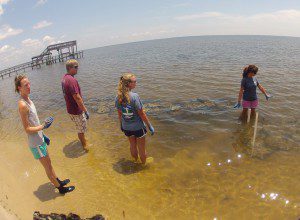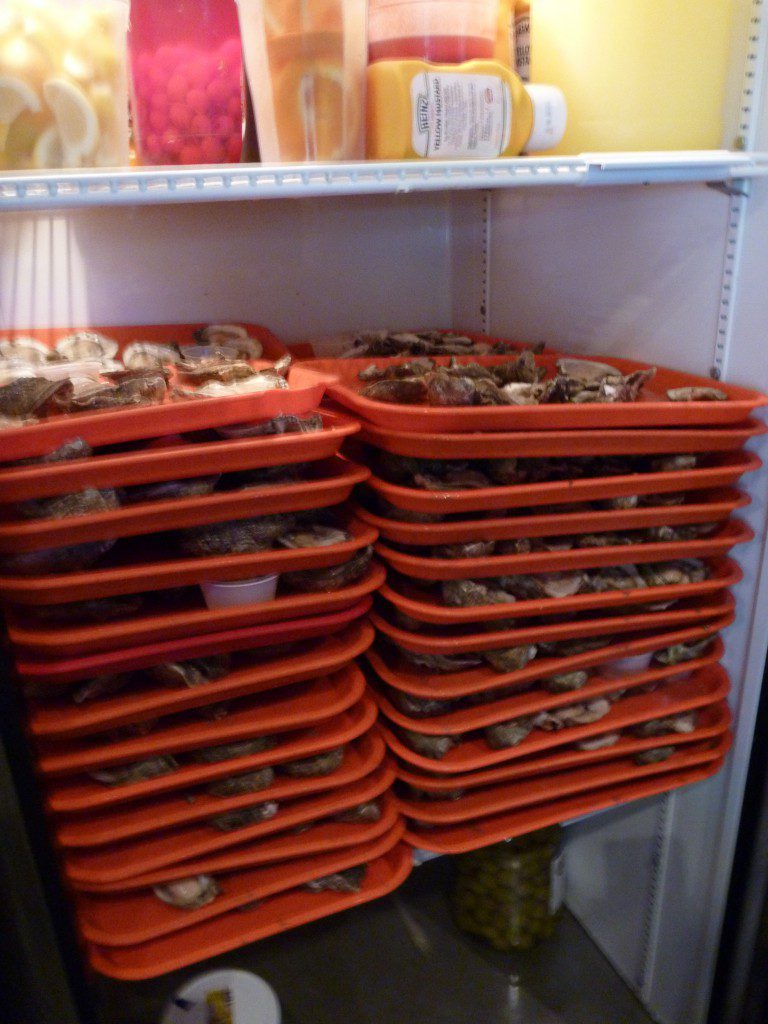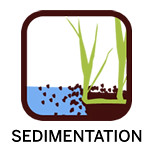Rob Diaz de Villegas WFSU-TV

CBA staff from L to R: Brandy Foley, Jeff Murphy, and Rachel Gwin listen as Allison McDowell explains how the reef is to be laid out. She had previously laid the section visible under the water.
I’ve been wanting to do a video on Choctawhatchee Basin Alliance‘s Oyster Recycling program for some time. I decided to do it now because we’ve been covering restoration efforts in Apalachicola Bay, and while the two efforts appear to have similar goals, they’re both using different methods and aiming at different goals. In Apalachicola, they’re trying to restore their fishery. They want oyster spat to settle on their shells and grow into market sized (3 inches or more) adults. In Choctawhatchee, they’re rebuilding their coastline. It’s an ecosystem service we have mentioned in the past but have struggled to show, how oyster reefs (and salt marshes) prevent erosion. You can see in the video above how the coastline is retreating and exposing tree roots where these natural barriers have been removed. And you can see how the sand just accumulates where they’ve replaced shell. It’s one of the many beautiful things an oyster reef does.
With 85% of the world’s oyster reefs having already been lost, and with more being threatened, restoration is critical. Many of those efforts center around what’s left in your basket when you leave the raw bar. Every part of the oyster is valuable. The animal itself cleans the water and provides income for oyster harvesters. But it’s also a builder, and an oyster reef provides shelter for various fish, crab, and snail species, many of which we eat. The shells that make the reef are the best place for a larval oyster to land. So those dozen or two shells you walk away from have their value as well. Thankfully, people like the Choctawhatchee Basin Alliance staff and volunteers are doing the hard work of collecting them and putting them back to work for the reef.

This is a refrigerator at Busters in Santa Rosa Beach. Standing behind the bar, Donnie Sellers shucked 75 dozen oysters the day we were there, and that was before tourist season. All of the restaurant’s shells end up in blue recycle bins.
Music in the Piece by Red Lion.
In the Grass, On the Reef is funded by a grant from the National Science Foundation.

